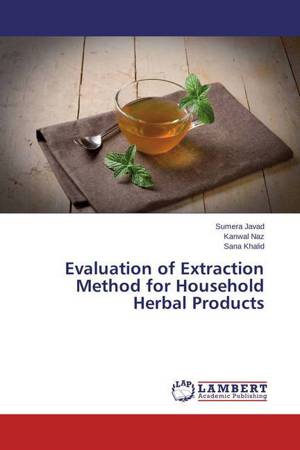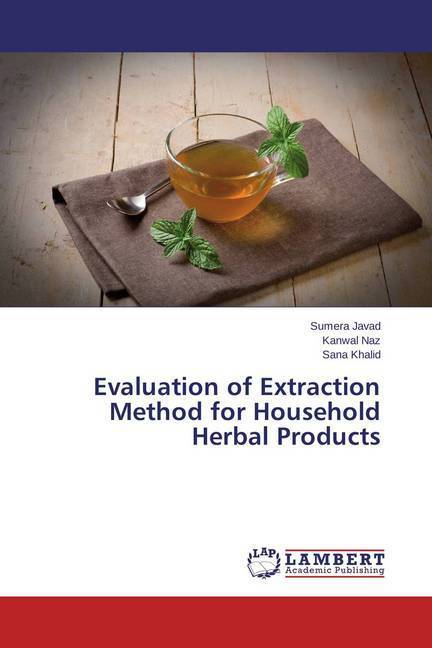
- Afhalen na 1 uur in een winkel met voorraad
- Gratis thuislevering in België vanaf € 30
- Ruim aanbod met 7 miljoen producten
- Afhalen na 1 uur in een winkel met voorraad
- Gratis thuislevering in België vanaf € 30
- Ruim aanbod met 7 miljoen producten
Zoeken
Evaluation of Extraction Method for Household Herbal Products
Sumera Javad, Kanwal Naz, Sana Khalid
Paperback | Engels
€ 38,95
+ 77 punten
Omschrijving
Microwave assisted extraction is a modern and novel approach for rapid and efficient extraction of the plant material which are of prime importance in herbal medicinal industry. In present study a comparison was made between conventional method of extraction (stove heating) and the modern method of extraction (Microwave assisted extraction) for analyzing the extraction efficiency of both commonly used methods for household herbal products (i.e., Green tea, Vital tea, Supreme tea, Danedar tea, Tez Dam tea, Tetley and Lipton tea), Qehwa (Peshawari Qehwa), Coffee (Nescafe Classic) and Joshanda (Qarshi industries). It was found that microwave assisted extraction gave the maximum amount of extracts than the stove heating extraction. Qualitative tests were performed for all the extracts for the presence of alkaloids, phenolics, flavonoids and terpenoids, while quantitative tests were applied to check the quantity of phenolics and flavonoids in the extracts. Results showed that there was a significant difference of amount of Phenolics and flavonoids from microwave assisted extract and stove heated extract of each sample.
Specificaties
Betrokkenen
- Auteur(s):
- Uitgeverij:
Inhoud
- Aantal bladzijden:
- 64
- Taal:
- Engels
Eigenschappen
- Productcode (EAN):
- 9783659750311
- Verschijningsdatum:
- 30/06/2015
- Uitvoering:
- Paperback
- Afmetingen:
- 150 mm x 4 mm
- Gewicht:
- 114 g

Alleen bij Standaard Boekhandel
+ 77 punten op je klantenkaart van Standaard Boekhandel
Beoordelingen
We publiceren alleen reviews die voldoen aan de voorwaarden voor reviews. Bekijk onze voorwaarden voor reviews.








